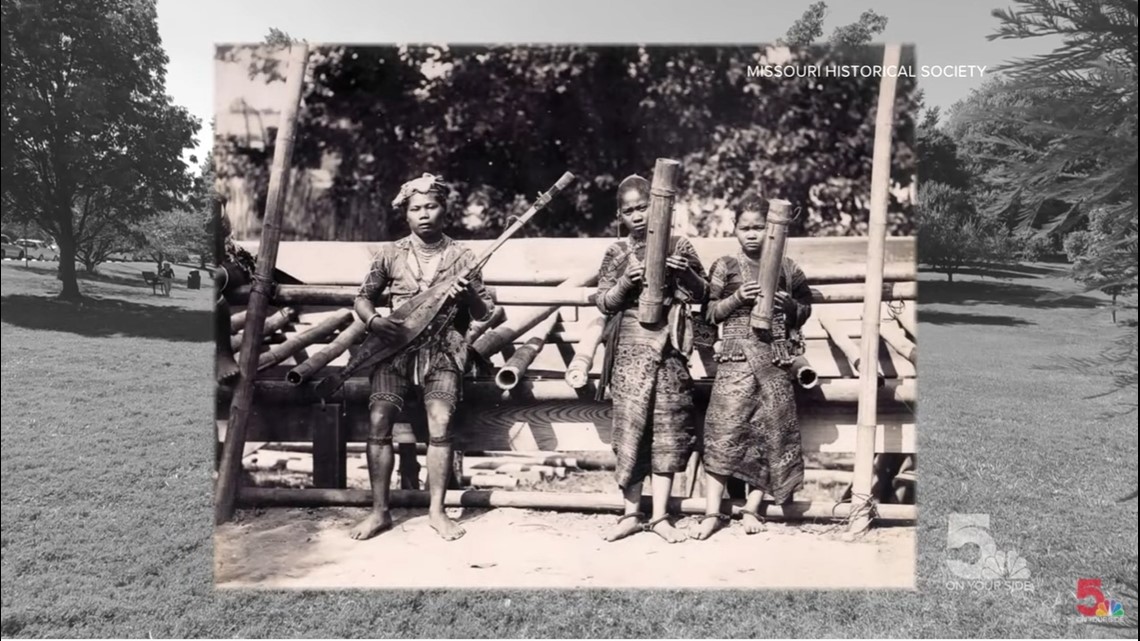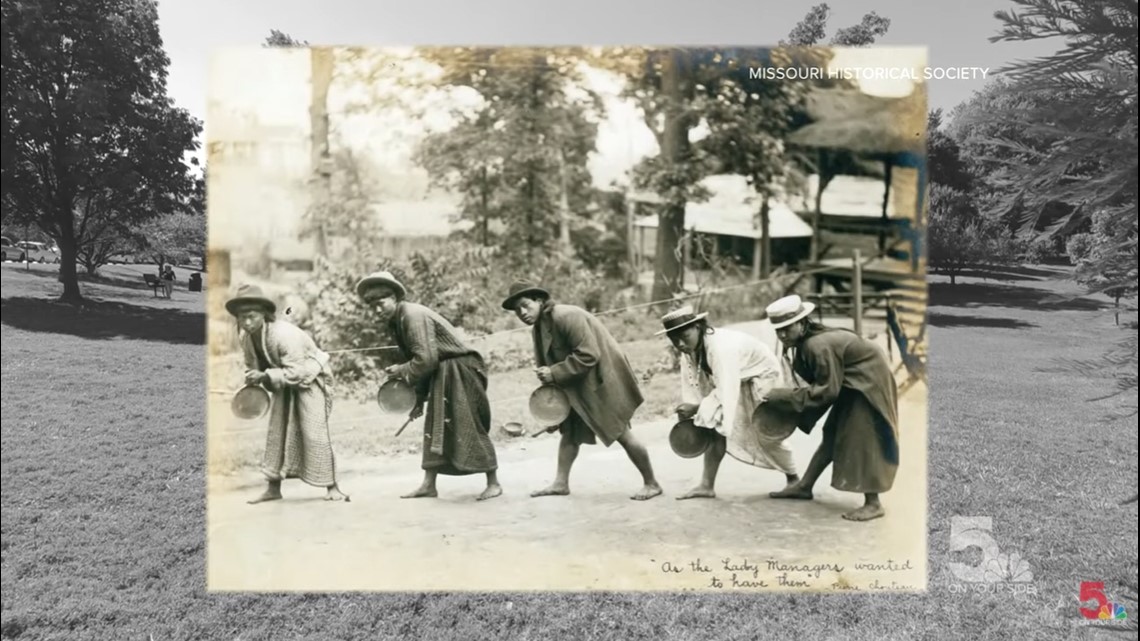ST. LOUIS — The map of St. Louis is dotted with reminders of the 1904's World's Fair Exposition, which was a celebration of American conquests and progress. But the most visited attraction at the fair--built up around Filipino people--has been largely forgotten or ignored.
The area is a part of Clayton, known for its charming sprawl, renowned restaurants, and million-dollar houses. The Demun neighborhood was also once home to one of the most popular events at the celebrated 1904 St. Louis World's Fair. Forty acres became the Philippine Village, and while there's no sign of it here today, for the event, around 100 people were brought over from the Philippines to live in replicas of their tribal communities.
The fair played up the more foreign aspects of Filipino culture and treated their traditions and customs as savage and exotic oddities. Their daily lives were on display to the public. It's been called a human zoo; these people were a spectacle.




But why?
This was shortly after the US colonized the Philippines. The whole exhibit was a government-funded messaging campaign to show Filipinos as uncivilized, inferior, and in desperate need of American leadership.
While the exact number is unknown, some Filipinos participants died of disease and poor living conditions.
Racist stereotypes long outlived the fair.
Today, there's a small but growing movement to officially recognize this as a historic site, acknowledging what happened here and memorializing those whose lives were exploited for show.
But for now, until something becomes more permanent, the memorial is a living one. It's every Filipino, every person who walks through here and remembers.

